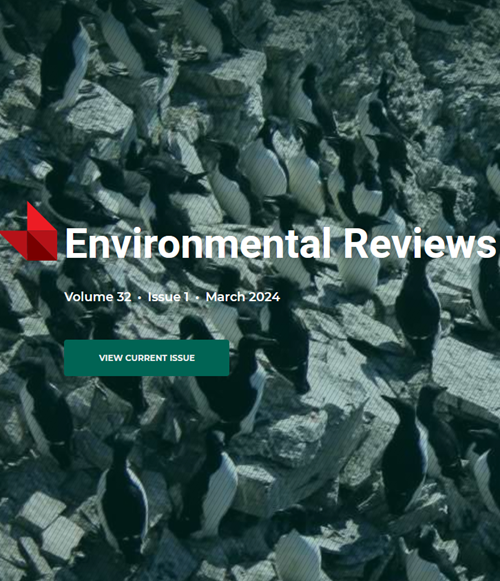Increased use of sanitizers and disinfectants during the COVID-19 pandemic: identification of antimicrobial chemicals and considerations for aquatic environmental contamination
IF 5.1
3区 环境科学与生态学
Q2 ENVIRONMENTAL SCIENCES
引用次数: 7
Abstract
In response to the coronavirus (COVID-19) pandemic there has been an increased need for personal and environmental decontamination to aid in curbing transmission of the SARS-CoV-2 virus. Products used for this purpose include sanitizers for hands and disinfectants for surfaces. The active chemical ingredients used in these products, termed antimicrobials, can enter waste streams after application and may be emerging as more prominent environmental contaminants. Even prior to COVID-19, there was recognized need to examine their implications for aquatic biota, which is now made more pressing due to their exaggerated use in response to the pandemic. Our objectives were to identify current antimicrobial active ingredients, quantify their increased use, and determine which may be candidates for further consideration as possible aquatic contaminants. By consulting multiple sources of publicly available information in Canada, we identified current-use antimicrobials from the lists of sanitizers and surface disinfectants approved for use against SARS-CoV-2 by Health Canada and the drug registration database. To estimate the use of sanitizers and disinfectants, we evaluated import quantities and grocery store retail sales of related compounds and products (Statistics Canada) and both lines of evidence supported increased use trends. The list of identified antimicrobials was refined to include only candidates with potential to reach aquatic ecosystems, and information on their environmental concentrations and toxicity to aquatic biota were reviewed. Candidate antimicrobials (n=32) fell into four main categories: quaternary ammonium compounds (QACs), phenols, acids and salts. Benzalkonium chloride, a QAC, was the most prominent active ingredient used in both non-alcohol-based hand sanitizers and surface disinfectants. Four QACs followed in prevalence and the next most used antimicrobial was triclosan (hand sanitizers only), an established and regulated environmental contaminant. Little information was found on environmental concentrations of other candidates, suggesting that the majority would fall into the category of emerging contaminants if they enter aquatic systems. Several were classified as acutely or chronically toxic to aquatic biota (Globally Harmonised System) and thus we recommend empirical research begin focusing on environmental monitoring of all candidate antimicrobials as a critical next step, with detection method development first where needed.新冠肺炎大流行期间消毒液和消毒剂的使用增加:抗菌化学品的识别和对水生环境污染的考虑
为应对冠状病毒(COVID-19)大流行,人们越来越需要对个人和环境进行净化,以帮助遏制SARS-CoV-2病毒的传播。用于此目的的产品包括手部消毒剂和表面消毒剂。这些产品中使用的活性化学成分被称为抗菌剂,在使用后可能进入废物流,并可能成为更突出的环境污染物。甚至在2019冠状病毒病之前,人们就认识到有必要研究它们对水生生物群的影响,由于在应对大流行时过度使用它们,这一问题现在变得更加紧迫。我们的目标是确定当前的抗菌活性成分,量化其增加的使用,并确定哪些可能是进一步考虑的候选水生污染物。通过查阅加拿大多个公开信息来源,我们从加拿大卫生部和药物注册数据库批准用于治疗SARS-CoV-2的消毒剂和表面消毒剂清单中确定了当前使用的抗菌素。为了估计消毒液和消毒剂的使用,我们评估了相关化合物和产品的进口量和杂货店零售额(加拿大统计局),两种证据都支持使用增加的趋势。对已确定的抗菌素清单进行了细化,仅包括可能到达水生生态系统的候选药物,并对其环境浓度和对水生生物群的毒性信息进行了审查。候选抗菌剂(n=32)主要分为四大类:季铵化合物(QACs)、酚类、酸类和盐类。苯扎氯铵是一种QAC,是非酒精类洗手液和表面消毒剂中使用的最主要的活性成分。紧随其后的是四种qac的流行程度,其次使用最多的抗菌剂是三氯生(仅限洗手液),这是一种已确定并受到监管的环境污染物。关于其他候选者的环境浓度的资料很少,这表明如果它们进入水生系统,大多数将属于新出现的污染物类别。有几种被归类为对水生生物群急性或慢性毒性(全球协调系统),因此我们建议实证研究开始将重点放在所有候选抗菌素的环境监测上,作为关键的下一步,在需要时首先开发检测方法。
本文章由计算机程序翻译,如有差异,请以英文原文为准。
求助全文
约1分钟内获得全文
求助全文
来源期刊

Environmental Reviews
环境科学-环境科学
自引率
3.50%
发文量
45
期刊介绍:
Published since 1993, Environmental Reviews is a quarterly journal that presents authoritative literature reviews on a wide range of environmental science and associated environmental studies topics, with emphasis on the effects on and response of both natural and manmade ecosystems to anthropogenic stress. The authorship and scope are international, with critical literature reviews submitted and invited on such topics as sustainability, water supply management, climate change, harvesting impacts, acid rain, pesticide use, lake acidification, air and marine pollution, oil and gas development, biological control, food chain biomagnification, rehabilitation of polluted aquatic systems, erosion, forestry, bio-indicators of environmental stress, conservation of biodiversity, and many other environmental issues.
 求助内容:
求助内容: 应助结果提醒方式:
应助结果提醒方式:


